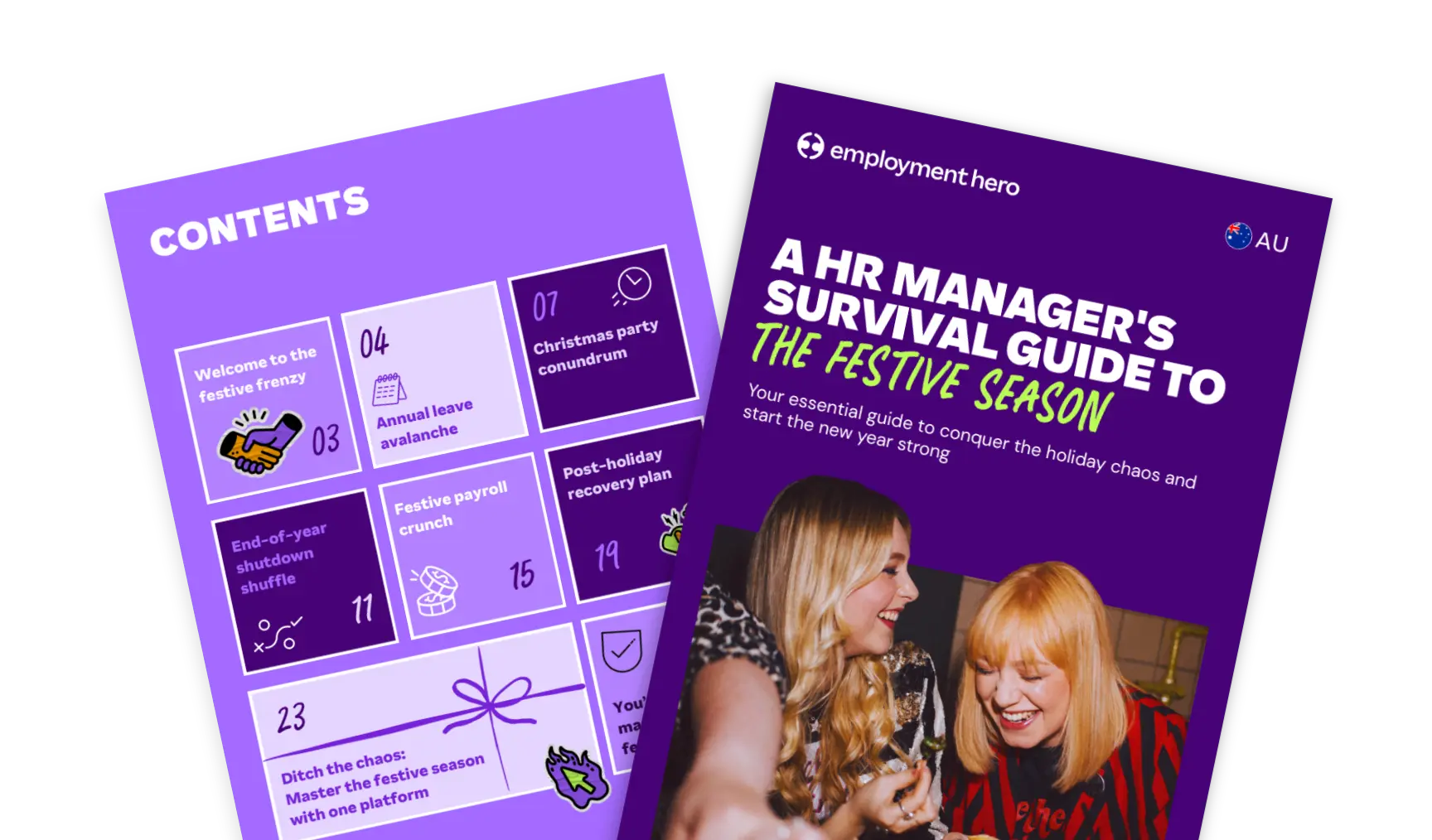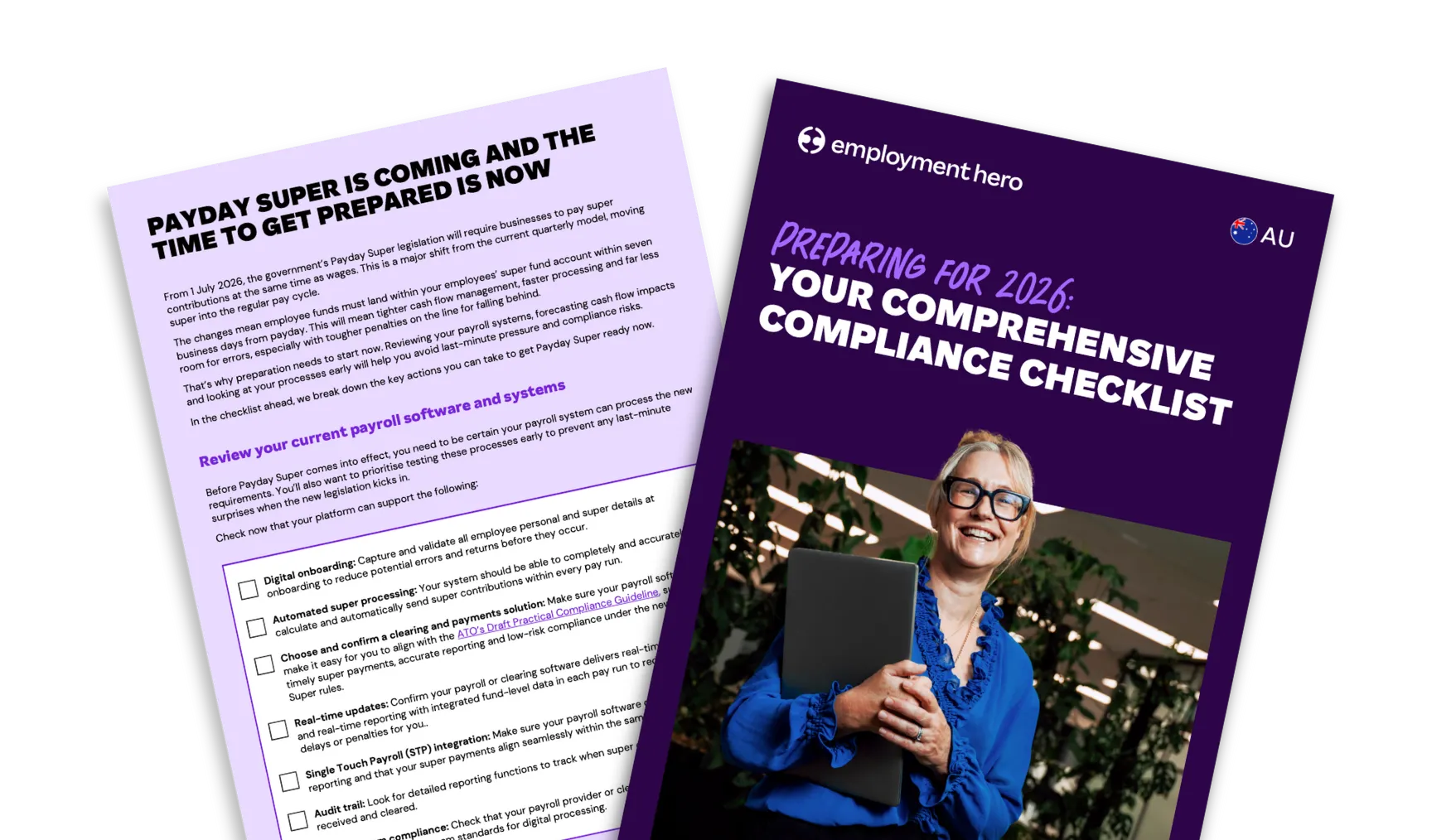Your first 90 days as an HR manager: a complete 30-60-90 day plan
Published
Your first 90 days as an HR manager: a complete 30-60-90 day plan
Published
Stepping into a new HR manager role is a huge opportunity to shape a company’s culture and drive its success. The first three months are your proving ground. It’s arguably the most important window to build trust, identify challenges and start making a real impact.
A robust plan is your best tool for working through this period, allowing you to move from learning the ropes to strategic leader. This guide gives you the 30-60-90 day framework you need to jump right in and set yourself up for long-term success.
What’s in this 90 day HR guide?
This guide has everything you need to make a meaningful difference in your new role from day one. It’s designed to help both new HR managers and seasoned HR professionals transition smoothly into a new role. Here’s what you’ll find:
- A clear 30-60-90 day structure: Break down your first three months into manageable phases including learning, planning and executing.
- Actionable steps for each phase: Learn what to prioritise, from understanding the company’s culture to launching your first HR initiatives.
- Key skills for success: Learn the essential qualities that separate a good HR manager from a great one.
- Strategies for building trust: Get practical tips on connecting with your leadership team, main stakeholders and your new team.
- A path to sustainable change: Find out how to add value well beyond your initial 90 days.
Download the first 90 Days as an HR manager guide now by filling out the form.
Why your first 90 days matter as an HR manager
The first 90 days as an HR manager sets the foundation for your entire tenure. Without a plan, you risk getting bogged down in day-to-day tasks instead of focusing on strategic priorities. A well-structured approach helps you build credibility in the business, showcase your value and establish HR as a vital partner.
It helps set clear expectations early
Your first priority should be to understand what success looks like. From day one, align with senior leadership on the company’s goals and their expectations for the HR function. This makes sure your efforts are directed where they matter most and prevents misunderstandings down the line. It’s your chance to listen, learn and absorb the company’s values and business objectives.
It defines HR’s strategic role in the business
A new HR manager has a unique opportunity to elevate the role of HR from an administrative function to a strategic powerhouse. Use your fresh perspective to connect people strategy directly to business outcomes.
By focusing on how HR can solve bigger problems like improving productivity, boosting employee engagement and supporting growth, you immediately show your strategic value.

The 30-60-90 day plan for new HR managers
This phased structure will guide you from understanding the current state to driving future success. It focuses on listening first, planning thoughtfully and then executing.
Days 1–30: Learn, listen and build trust
Your first month is all about observation and absorption. Resist the urge to jump in and start changing things immediately. Instead, become a student of the business. Meet with different stakeholders across all departments to understand their roles, challenges and what they need from HR.
Spend time with your new HR team to learn about existing HR processes and tools. Immerse yourself in the company’s culture to understand its unwritten rules and social dynamics. This period is crucial for building the relationships and trust you’ll need to drive change later.
Days 31–60: Set goals and implement early wins
Now that you have the lay of the land, it’s time to start planning. Use the insights you’ve gathered to identify opportunities for quick wins. These are small, visible improvements that can build excitement and showcase your ability to deliver results.
This could involve streamlining onboarding with onboarding software, updating an outdated policy or improving internal communication channels. Align these short-term goals with your long-term HR strategy to make sure every action contributes to the bigger picture.
Days 61–90: Drive sustainable change and measure success
In your third month, you can begin to execute larger initiatives, like locking in new HR and payroll software. Here, you’ll also introduce new plans specifically designed to boost employee engagement, improve performance management or enhance learning and development through training programs.
You want your changes to stick, so you might want to consider a solid change management plan. Communicate the “why” behind your initiatives and get buy-in from your leadership team and employees. Start tracking key HR metrics to measure your impact and demonstrate the ROI of your efforts.
Key skills for success as a new HR Manager
Succeeding as a new HR manager requires a blend of technical, personal and professional qualities that allow you to lead with credibility.
Empathy and active listening
The best HR leaders are deeply connected to their people. Empathy allows you to understand employees’ needs and concerns, while active listening helps you build the trust required to become a credible advisor. These skills are fundamental to creating a positive work environment and arguably one of the most important qualities of an HR manager.
Organisational and strategic thinking
You need to balance the day-to-day HR tasks with a big-picture vision. This means being able to switch from handling a specific employee issue to contributing to a high-level discussion about the company’s HR strategy. This ability to think strategically is what elevates you from an HR manager to an HR leader.
Data literacy and tech proficiency
HR today is driven by data. You need to be comfortable using HR metrics to make informed decisions and show how you’re driving value and results. Proficiency with an effective HR system is a critical part of your role.
This is where Employment Hero’s HR software is your secret sauce to HR success. It has everything you need to automate routine HR tasks, provide powerful insights and free you up to focus on more strategic work.
Curiosity and continuous learning
The world of work is always changing and so are the needs of your business. A growth mindset and a commitment to continuous improvement are the secret to staying ahead. Stay curious, ask questions and always be open to learning new HR strategies and approaches.

Building relationships and trust in your new role
Your success depends on the strength of your relationships. Here’s how to build a strong network from the start.
Connect with key stakeholders
Schedule regular check-ins with senior leaders and department managers. Use this time to understand their priorities, share your HR vision and get aligned on the overarching business goals. Proactive communication builds trust and positions you as a valuable partner to other teams in the business.
Empower your HR Team
Your HR team is your greatest asset. Take the time to understand their strengths, support their development and give them the tools to succeed. A motivated and high-performing HR team is essential for executing your vision.
Create a feedback culture early
Show that you value input by actively seeking employee feedback on your ideas and initiatives. Creating feedback loops early on not only helps you refine your approach but also demonstrates your commitment to collaboration and improvement.
Driving sustainable HR change beyond 90 days
Your first 90 days are just the beginning. You need to build scalable systems and a long-term people strategy.
Introduce continuous improvement frameworks
Use data and feedback to constantly refine your HR processes. Don’t let your initiatives become static. Regular reviews ensure they remain effective and aligned with the evolving needs of the business.
Build measurable people KPIs
Track the impact of your work through key metrics related to employee engagement, employee satisfaction, turnover and compliance. These KPIs will help you demonstrate the value of HR and secure resources for future initiatives.
Align HR technology to growth goals
As your company grows, your HR processes need to scale. Implementing an all-in-one platform (like Employment Hero) helps automate tasks, maintain consistency and supports your company’s long-term key objectives.
Download the first 90 days HR manager guide
Ready to create your own winning 90-day plan? For more in-depth guidance, check out this helpful resource on HR management. By following a structured plan, you can make your first three months as a new HR manager a resounding success and pave the way for a rewarding career. Good luck!
Download the first 90 Days as an HR manager guide now by filling out the form.
Disclaimer: The information in this guide is current as at 18 November 2025 and has been prepared by Employment Hero Pty Ltd (ABN 11 160 047 709) and its related bodies corporate (Employment Hero). The views expressed in this guide are general information only, are provided in good faith to assist employers and their employees, and should not be relied on as professional advice. The Information is based on data supplied by third parties. While such data is believed to be accurate, it has not been independently verified and no warranties are given that it is complete, accurate, up to date or fit for the purpose for which it is required. Employment Hero does not accept responsibility for any inaccuracy in such data and is not liable for any loss or damages arising either directly or indirectly as a result of reliance on, use of or inability to use any information provided in this guide. You should undertake your own research and to seek professional advice before making any decisions or relying on the information in this guide.
Register for the guide
Related Resources
-
 Read more: HR Managers: Don’t just survive the festive season, master it
Read more: HR Managers: Don’t just survive the festive season, master itHR Managers: Don’t just survive the festive season, master it
Make year-end easier: manage leave, payroll, parties and shutdowns with confidence. Get practical tips for Australian SMEs. Download the free…
-
 Read more: Preparing for 2026: Your Compliance Checklist
Read more: Preparing for 2026: Your Compliance ChecklistPreparing for 2026: Your Compliance Checklist
Get your business ready for the 1 July 2026 changes. See practical steps for Payday Super, cash flow planning and…
-
 Read more: Monthly business budget template for employers
Read more: Monthly business budget template for employersMonthly business budget template for employers
Plan your monthly income and expenses with our free monthly business budget template. Download today to track cash flow and…























